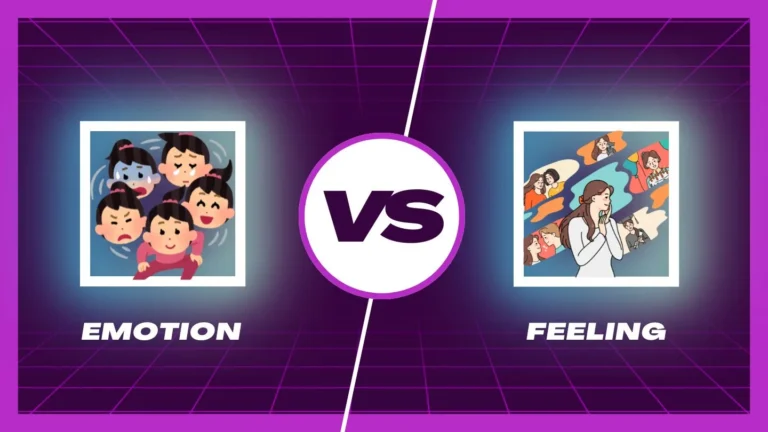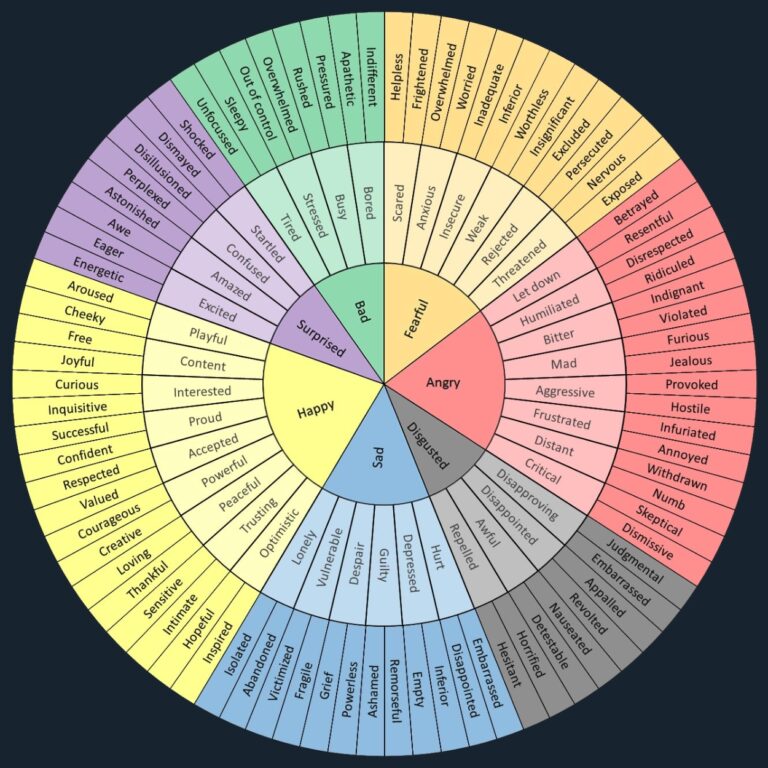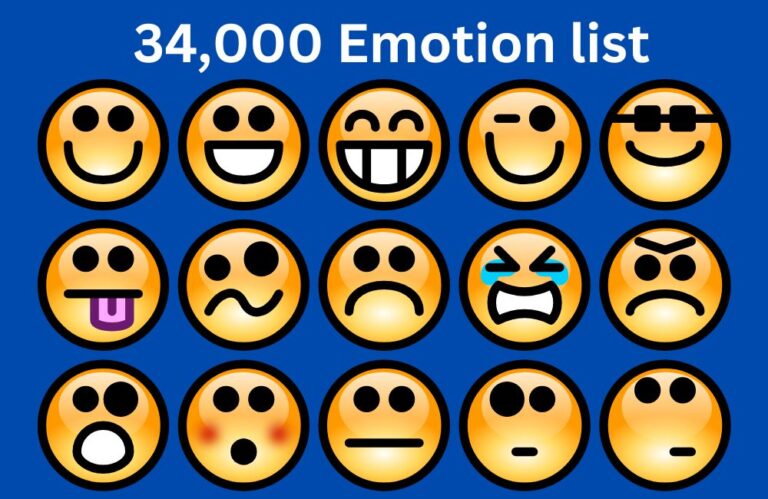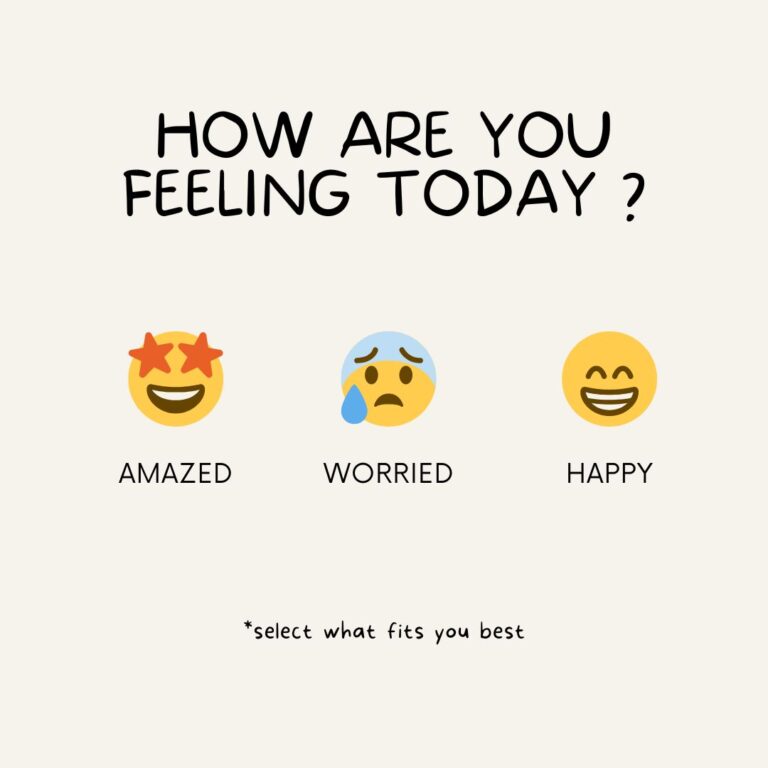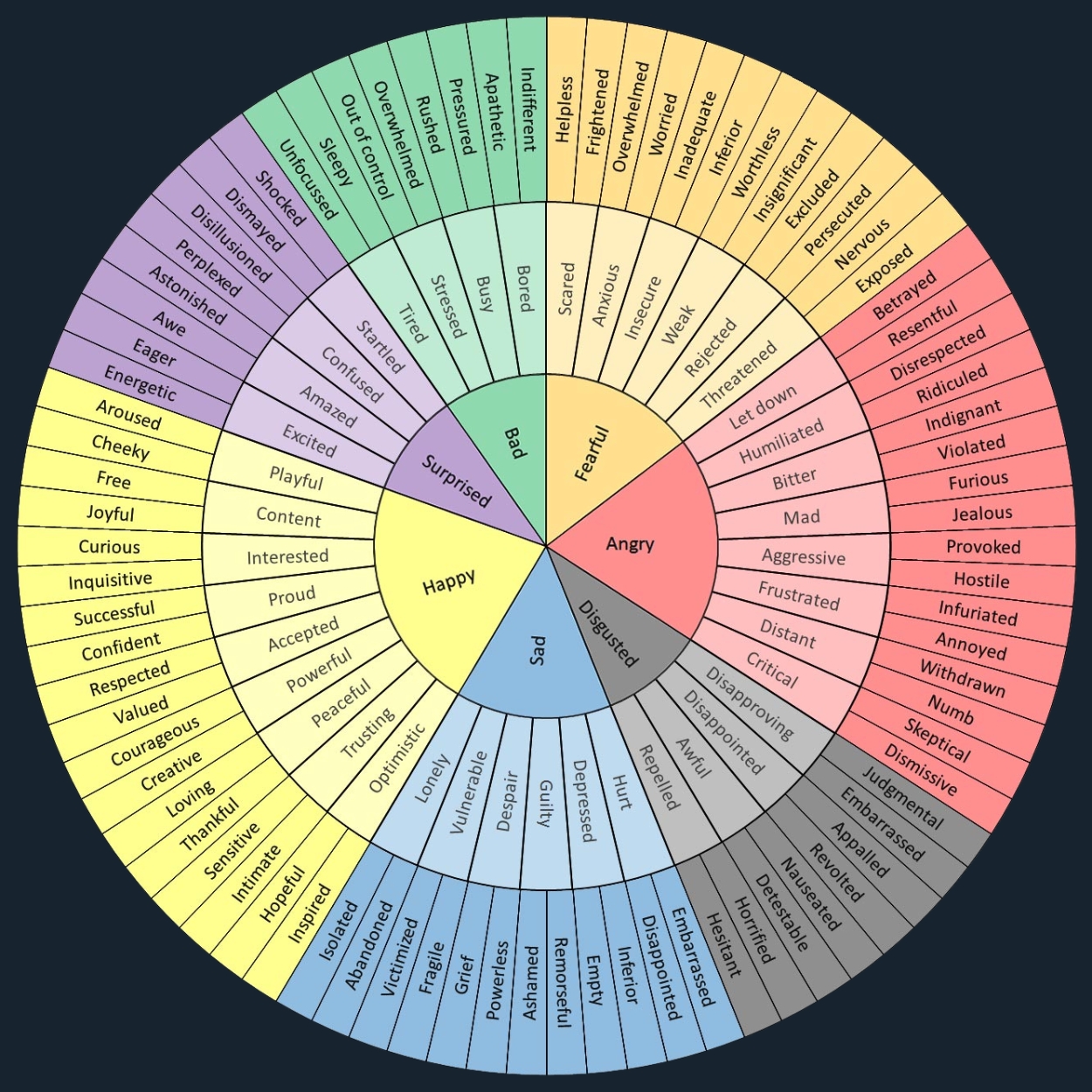
Emotions can be like a swirling storm or a gentle breeze—sometimes intense and overwhelming, other times subtle and elusive. But what if you could pinpoint exactly what you’re feeling? Enter the emotion Wheel.
Created by Dr. Gloria Wilcox this unique tool organizes emotions into concentric circles, revealing primary, secondary, and tertiary feelings. From broad happiness to nuanced frustration, the Emotion Wheel helps you navigate your emotional landscape with precision. Dive in explore, and enhance your emotional intelligence!
what is the Emotion wheel?
An emotional wheel is a visual representation of various emotions, organized in a circular format. It helps us understand and process our feelings. Psychologist Robert Plutchik proposed eight primary emotions as the foundation for all others: Loathing, Grief, Amazement, Terror, Admiration, Ecstasy, Vigilance, and Rage.
These wheels categorize emotions into primary, secondary, and tertiary levels, allowing us to pinpoint nuanced variations within each emotional state.
When using an emotion wheel, start by identifying the emotion closest to how you feel, analyze connections, and consider triggers. It’s a valuable tool for improving emotional intelligence and coping with emotions.
Benefits of the emotion wheel

When emotion wheels are used for self-reflection, they prove invaluable in fostering self-awareness. They enhance emotional literacy in two significant ways.
Firstly, emotion wheels facilitate the comprehension and articulation of one’s feelings. Sometimes, emotions are straightforward; for instance, we feel gratitude when someone shows kindness. In such cases, a feelings wheel might not add much clarity because the emotion is readily identifiable and its impact on our actions is clear.
However, human emotions are often more complex than simple reactions. They have evolved as adaptive responses crucial for survival, as proposed by Plutchik. Emotions arise when specific stimuli trigger behavioral urges.
This evolutionary perspective is akin to our instinctual fight-or-flight response, originally designed to protect against threats. Awareness of such emotional triggers helps us understand our reactions of fear or anger, which in turn prompt decisions to confront or flee.
Secondly, emotion wheels provide insight into emotions as signals that prompt survival-oriented behaviors. Viewing emotions solely as disruptive forces limits our ability to manage them effectively. Conversely, when we grasp the messages underlying our emotions, we can address the deeper needs they signify.
In essence, emotion wheels serve as tools not only for identifying and expressing feelings but also for understanding emotions as adaptive responses rooted in our evolutionary history. This understanding empowers us to navigate emotions more effectively by addressing their underlying causes and responding in ways that align with our well-being.
How can I use the Feelings Wheel to identify my emotions?
The Feelings Wheel is a powerful tool for understanding and identifying your emotions. Here’s how you can use it:
- Start at the Center: Begin with the innermost circle, which contains primary emotions. These are the fundamental feelings we all experience, such as joy, fear, anger, sadness, and surprise.
- Expand Outward: As you move to the next circle, you’ll find secondary emotions. These are combinations of primary emotions. For example, jealousy combines anger, fear, and sadness. Guilt blends sadness and fear.
- Pinpoint Your Feelings: Use the wheel to pinpoint what you’re feeling. Ask yourself: “Am I primarily experiencing joy or sadness? Or is it a mix of emotions?” Move outward to find more specific feelings.
- Explore Nuances: The outer circles contain even more nuanced emotions. For instance, pride combines joy with a sense of accomplishment. Anxiety blends fear and worry about the future.
- Reflect and Label: Take a moment to reflect on your emotions. Label them using the words on the wheel. This process enhances emotional awareness and helps you express yourself more accurately.
Remember, emotions are complex, and the emotion Wheel provides a roadmap to navigate them. Happy exploring!
How can I teach my kids about emotions using this tool?
The Feelings Wheel is a fantastic resource for helping kids understand and express their emotions. Here’s how you can use it effectively:
- Introduce the Feelings Wheel: Sit down with your child and explore the various emotions depicted on the wheel. Discuss what each emotion means and when they might experience it. Make it a positive and engaging conversation.
- Identify Feelings Together: Encourage your child to use the wheel to identify how they’re feeling. Sometimes, children struggle to find the right words when upset, so the wheel can guide them. Validate their emotions and provide guidance as needed.
- Daily Check-Ins: Make discussing emotions a routine. Incorporate the feelings wheel into daily check-ins or bedtime routines. Ask questions like, “How did you feel today?” or “Which emotion from the wheel describes your day?”
- Conflict Resolution: During conflicts, use the feelings wheel to de-escalate situations. Help your child express what they’re feeling and why. It’s a powerful tool for communication.
- Apologizing: When apologizing to your child, consider that they might be experiencing a combination of emotions. The feelings wheel can help you address their feelings effectively.
Remember, the feelings wheel fosters emotional intelligence, empathy, and healthy expression. Enjoy exploring emotions together!
Final Thoughts
Understanding our feelings is crucial for developing emotional awareness. Rather than suppressing them, we should listen to what our emotions are communicating. This process is essential for our emotional well-being, helping us identify where our needs and values may be out of sync.
When we become adept at understanding and expressing our emotions, it enhances our ability to manage stress, communicate effectively with others, and cultivate self-compassion.
If you’re unsure how to utilize the emotion wheel effectively, consider discussing it with your therapist or BetterUp coach. They can guide you through questions that reveal the true messages behind your feelings. This support can be invaluable in gaining deeper insights into your emotional landscape.
